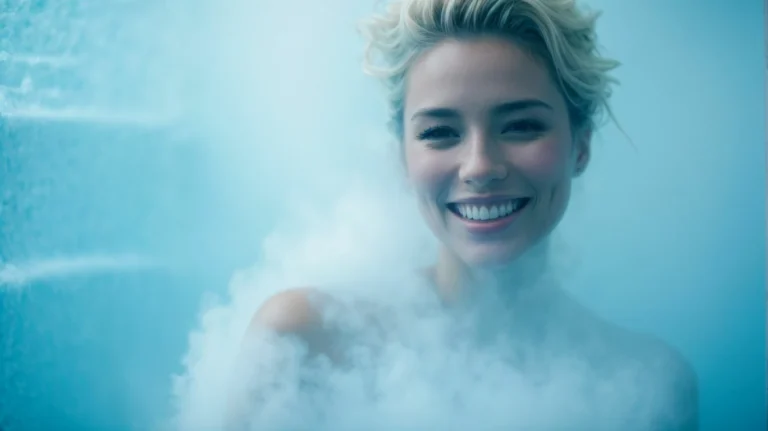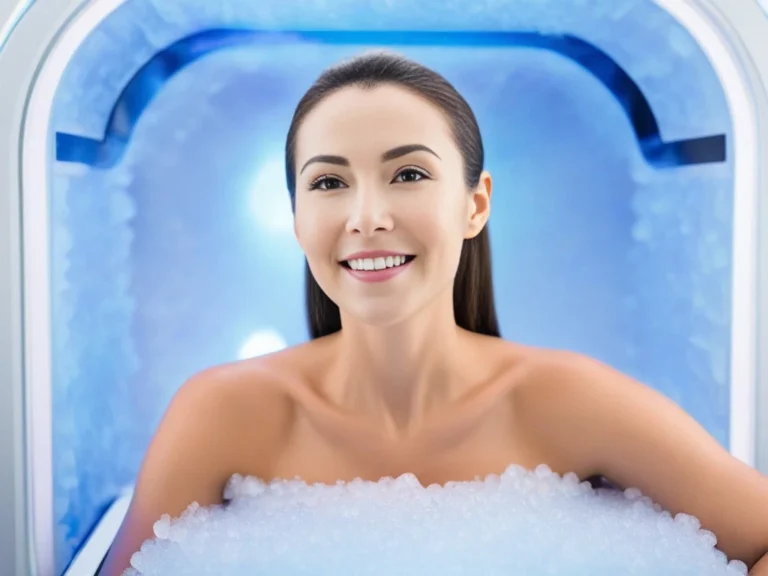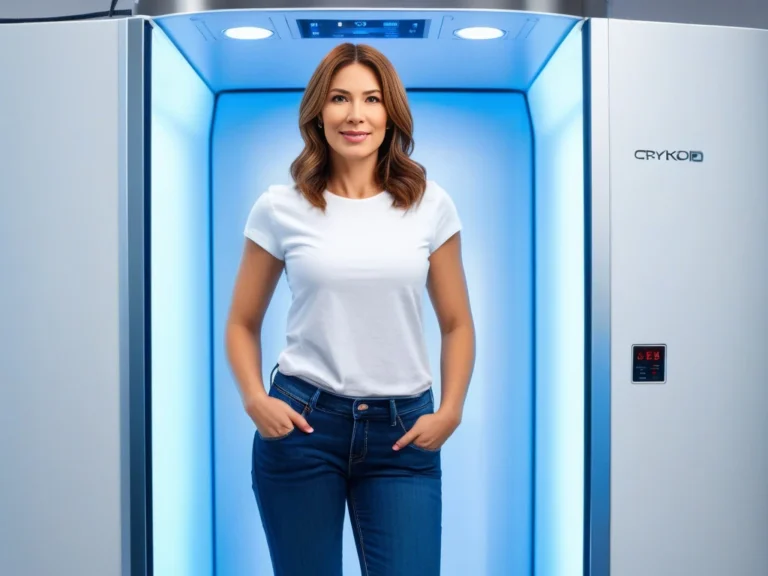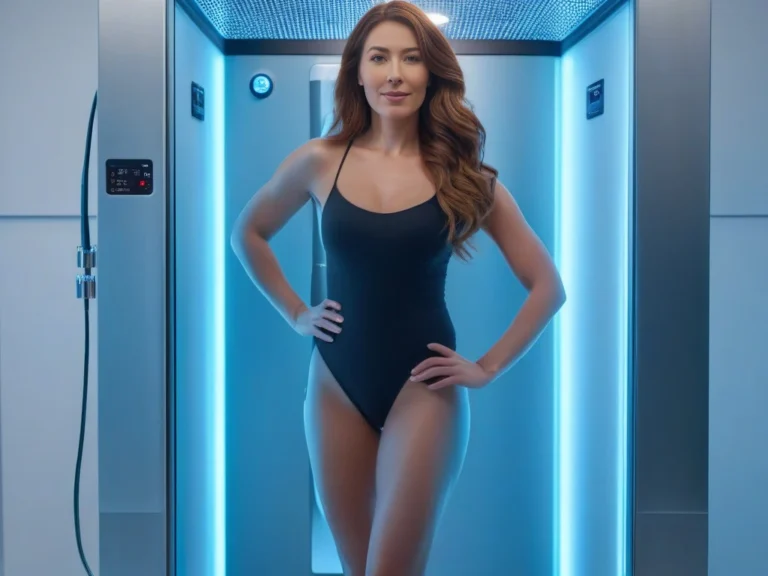What Are the Most Frequently Asked Questions About Cryotherapy in London?

Cryotherapy has gained popularity in recent years as a trendy wellness treatment. It involves exposing the body to extremely cold temperatures for a short time, typically in a cryotherapy chamber or tank. This article will provide an in-depth look at cryotherapy, including what it is, how it works, its benefits, safety considerations, session length and frequency, appropriate attire, and its potential for weight loss, muscle recovery, and skin conditions. Additionally, we will provide a list of recommended cryotherapy clinics in London.
SUMMARY
- Cryotherapy involves exposing the body to extremely cold temperatures for a short period of time.
- Benefits of cryotherapy include reduced inflammation, improved circulation, and pain relief.
- Cryotherapy is generally considered safe, but there are some risks associated with it.
- A typical cryotherapy session lasts between 2-4 minutes.
- During a cryotherapy session, it is recommended to wear minimal clothing and protective gear for the hands and feet.
What is cryotherapy and how does it work?
Cryotherapy is a treatment that involves exposing the body to extremely cold temperatures for a short time. There are different types of cryotherapy, including whole-body cryotherapy (WBC), localized cryotherapy, and cryofacial. WBC involves standing in a cryotherapy chamber or tank for 2-4 minutes, while localized cryotherapy targets specific areas of the body with a handheld device. Cryofacial focuses on the face and neck.
During a cryotherapy session, the body is exposed to temperatures as low as -200 degrees Fahrenheit (-130 degrees Celsius). The extreme cold causes blood vessels to constrict and then dilate once the session is over. This process is believed to have several benefits for the body, including reducing inflammation and pain, improving recovery time, boosting metabolism and aiding in weight loss, enhancing mood and energy levels, and improving skin conditions.
What are the benefits of cryotherapy?
One of the main benefits of cryotherapy is its ability to reduce inflammation and pain. The extreme cold temperatures cause blood vessels to constrict, which can help reduce swelling and inflammation in the body. This can be particularly beneficial for individuals with chronic pain conditions or those recovering from injuries or surgeries.
Cryotherapy has also been shown to improve recovery time. The cold temperatures help to reduce muscle soreness and inflammation, allowing athletes and fitness enthusiasts to recover more quickly between workouts. This can lead to improved performance and reduced risk of injury.
In addition, cryotherapy has been touted as a way to boost metabolism and aid in weight loss. The extreme cold temperatures cause the body to work harder to maintain its core temperature, which can increase calorie burn. Some studies have shown that regular cryotherapy sessions can lead to weight loss and a reduction in body fat.
Furthermore, cryotherapy has been reported to enhance mood and energy levels. The release of endorphins during a cryotherapy session can help improve mood and reduce symptoms of depression and anxiety. Additionally, the cold temperatures can provide a natural energy boost, leaving individuals feeling invigorated and refreshed.
Lastly, cryotherapy has been found to improve certain skin conditions. The cold temperatures can help reduce inflammation and redness associated with conditions such as eczema, psoriasis, and acne. It can also improve the overall appearance of the skin by promoting collagen production and tightening pores.
Is cryotherapy safe?
While cryotherapy is generally considered safe, there are some risks and potential side effects to be aware of. The extremely cold temperatures can cause frostbite or burns if proper precautions are not taken. It is important to follow the guidelines provided by the cryotherapy clinic and to protect sensitive areas of the body, such as the hands, feet, ears, and nose.
Before a cryotherapy session, it is recommended to remove all jewellery and ensure that the body is dry. Moisture on the skin can freeze during the session and increase the risk of frostbite. It is also important to wear protective clothing, such as gloves, socks, and slippers, to minimize exposure to cold temperatures.
Certain individuals should avoid cryotherapy altogether. This includes those with certain medical conditions, such as Raynaud’s disease or cold allergies, as well as pregnant women and individuals with open wounds or infections. It is always best to consult with a healthcare professional before trying cryotherapy.
You might also want to know if cryotherapy is painful or not. We got you covered and wrote a full article about it.
How long does a cryotherapy session last?
The average length of a cryotherapy session is 2-4 minutes, although some individuals may choose to stay in the chamber for longer. During a session, the individual will stand in a cryotherapy chamber or tank while being exposed to extremely cold temperatures. The temperature will gradually decrease throughout the session, reaching as low as -200 degrees Fahrenheit (-130 degrees Celsius).
During the session, it is normal to feel cold and possibly experience shivering. However, the cold temperatures are typically well-tolerated and individuals can exit the chamber at any time if they feel uncomfortable. After the session, it is common to experience a rush of endorphins and an increase in energy levels.
How often should I have cryotherapy sessions?
The recommended frequency of cryotherapy sessions varies depending on individual goals and preferences. Some individuals may choose to have sessions multiple times per week, while others may opt for once a week or even once a month. It is important to listen to your body and give yourself enough time to recover between sessions.
Factors that may affect the frequency of cryotherapy sessions include age, overall health, fitness level, and specific goals. It is always best to consult with a healthcare professional or cryotherapy specialist to determine the appropriate frequency for your individual needs.
Personal experience and preference also play a role in determining how often to have cryotherapy sessions. Some individuals may find that they benefit from more frequent sessions, while others may find that less frequent sessions are sufficient. It is important to pay attention to how your body responds to cryotherapy and adjust accordingly.
What should I wear during a cryotherapy session?
During a cryotherapy session, it is recommended to wear minimal clothing to maximize skin exposure to the cold temperatures. For men, this typically means wearing underwear or shorts. For women, a sports bra and underwear or shorts are usually sufficient. It is important to remove all jewellery and ensure that the body is dry before entering the cryotherapy chamber.
In addition to minimal clothing, it is important to wear protective accessories to minimize exposure to the cold temperatures. This includes gloves, socks, and slippers. These items help to protect the extremities, which are more susceptible to frostbite. It is also recommended to cover the ears and nose with a hat or headband.
It is important to note that some cryotherapy clinics may provide specific clothing and accessories for the session. It is best to check with the clinic beforehand to see if any additional items are required or provided.
Can cryotherapy help with weight loss?
Cryotherapy has been touted as a way to aid in weight loss and boost metabolism. The extreme cold temperatures cause the body to work harder to maintain its core temperature, which can increase calorie burn. Some studies have shown that regular cryotherapy sessions can lead to weight loss and a reduction in body fat.
One study published in the Journal of Clinical Investigation found that cryotherapy increased energy expenditure and fat oxidation in healthy individuals. Another study published in the International Journal of Obesity found that cryotherapy combined with exercise led to greater weight loss compared to exercise alone.
Real-life experiences and results also support the idea that cryotherapy can help with weight loss. Many individuals have reported seeing improvements in body composition and a reduction in stubborn fat deposits after incorporating cryotherapy into their routine.
Can cryotherapy help with muscle recovery?
Cryotherapy has been found to aid in muscle recovery by reducing muscle soreness and inflammation. The extreme cold temperatures cause blood vessels to constrict, which can help reduce swelling and inflammation in the muscles. This can be particularly beneficial for athletes and fitness enthusiasts who engage in intense workouts or training sessions.
Several studies have shown that cryotherapy can improve muscle recovery. One study published in the Journal of Science and Medicine in Sport found that cryotherapy reduced muscle soreness and improved muscle function after eccentric exercise. Another study published in the European Journal of Applied Physiology found that cryotherapy reduced markers of muscle damage and inflammation after intense exercise.
Real-life experiences and results also support the idea that cryotherapy can help with muscle recovery. Many athletes and fitness enthusiasts have reported experiencing less muscle soreness and a faster recovery time after incorporating cryotherapy into their routines.
Can cryotherapy help with skin conditions?
Cryotherapy has been found to aid in the treatment of certain skin conditions by reducing inflammation and promoting collagen production. The extremely cold temperatures can help reduce redness, swelling, and irritation associated with conditions such as eczema, psoriasis, and acne. It can also tighten pores and improve the overall appearance of the skin.
Several studies have shown that cryotherapy can improve skin conditions. One study published in the Journal of Cosmetic Dermatology found that cryotherapy reduced redness and improved skin texture in individuals with rosacea. Another study published in the Journal of Dermatological Treatment found that cryotherapy reduced acne lesions and improved overall skin quality.
Real-life experiences and results also support the idea that cryotherapy can help with skin conditions. Many individuals have reported seeing improvements in their skin after incorporating cryotherapy into their routine.
Where can I find cryotherapy clinics in London?
If you are interested in trying cryotherapy, several clinics in London offer this service. Here is a list of recommended cryotherapy clinics:
It is recommended to visit the websites of these clinics for more information on services offered, pricing, and booking appointments.
In conclusion, cryotherapy is a popular wellness treatment that involves exposing the body to extremely cold temperatures for a short period of time. It has gained popularity due to its potential benefits, including reduction of inflammation and pain, improved recovery time, boost in metabolism and weight loss, enhanced mood and energy levels, and improved skin conditions.
While cryotherapy is generally considered safe, there are some risks and potential side effects to be aware of. It is important to take precautions before and after a session and to consult with a healthcare professional if you have any concerns or medical conditions.
The length and frequency of cryotherapy sessions can vary depending on individual goals and preferences. It is recommended to listen to your body and adjust accordingly. Additionally, it is important to wear appropriate clothing and accessories during a session to protect against the extreme cold temperatures.
Cryotherapy has shown potential for aiding in weight loss, muscle recovery, and skin conditions. However, it is always best to consult with a healthcare professional or cryotherapy specialist to determine if it is the right treatment for you.
If you are interested in trying cryotherapy, several clinics in London offer this service. It is recommended to research each clinic and visit their websites for more information on services offered, pricing, and booking appointments.
Do you need more reasons to try cryotherapy? Click here!
FAQs
What is cryotherapy?
Cryotherapy is a treatment that involves exposing the body to extremely cold temperatures for a short period, typically between 2-4 minutes. This is done in a special chamber or room that uses liquid nitrogen to create a cold environment.
What are the benefits of cryotherapy?
Cryotherapy is believed to have several potential benefits, including reducing inflammation, improving circulation, boosting the immune system, and reducing pain and muscle soreness. It is also sometimes used as a weight loss aid and to improve skin tone and texture.
Is cryotherapy safe?
Cryotherapy is generally considered safe when performed by a trained professional. However, there are some risks associated with the treatment, including frostbite, skin burns, and eye damage. It is important to follow all safety guidelines and to inform your therapist of any medical conditions or concerns you may have.
How often should I have cryotherapy?
The frequency of cryotherapy treatments will depend on your individual needs and goals. Some people may benefit from daily treatments, while others may only need them once or twice a week. It is important to discuss your treatment plan with a qualified therapist to ensure that you are getting the most out of your sessions.
What should I wear during cryotherapy?
During cryotherapy, you will need to wear protective clothing, including gloves, socks, and underwear. Women should also wear a sports bra. It is important to avoid wearing any metal jewellery or accessories, as these can become very cold and cause skin irritation or injury.
How much does cryotherapy cost?
The cost of cryotherapy will vary depending on the location and the specific treatment being offered. In London, prices typically range from £50-£100 per session. Some clinics may offer package deals or discounts for multiple sessions. It is important to research different providers and compare prices before making a decision.
Is There Any Scientific Research on Cryotherapy?
Yes, plenty. CLICK HERE for a vast list of scientific resources related to cryotherapy.






